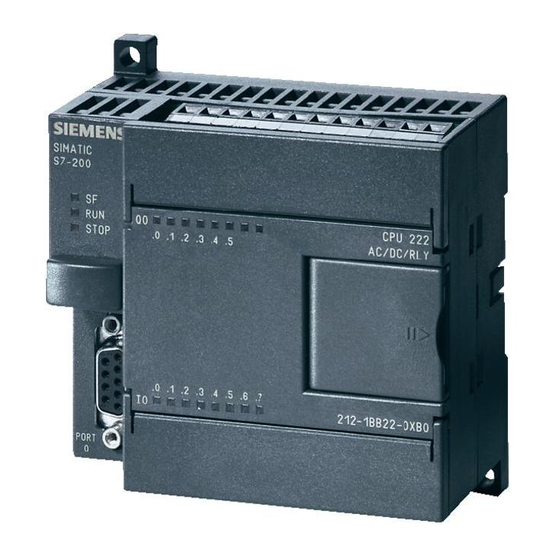
Siemens Simatic S7 Series Manuals
Manuals and User Guides for Siemens Simatic S7 Series. We have 2 Siemens Simatic S7 Series manuals available for free PDF download: System Manual, Manual
Siemens Simatic S7 Series System Manual (726 pages)
Brand: Siemens
|
Category: Controller
|
Size: 15.42 MB
Table of Contents
-
Preface3
-
-
Overview26
-
-
Power Budget39
-
-
-
Symbol Table100
-
Variable Table104
-
Fatal Errors111
-
-
System Block115
-
High-Speed I/O148
-
-
Bit Logic149
-
Standard Inputs149
-
Immediate Inputs151
-
Not156
-
Clock165
-
Communication170
-
Compare192
-
Convert198
-
Counters216
-
Pulse Output247
-
Math259
-
Pid268
-
PID Algorithm274
-
Interrupt282
-
Invert293
-
Move296
-
Block Move297
-
Swap Bytes298
-
Program Control300
-
FOR-NEXT Loop300
-
Shift and Rotate315
-
String320
-
Table326
-
Add to Table326
-
Memory Fill330
-
Table Find331
-
Timer335
-
Interval Timers344
-
Subroutine346
-
-
8 Communication
353-
Ethernet357
-
Overview357
-
TCP/IP Protocol357
-
Profibus372
-
Data Consistency376
-
PPI Protocol395
-
Rs485395
-
Freeport Mode406
-
Rs232410
-
9 Libraries
411-
Modbus RTU Slave443
-
-
-
Interconnections524
-
Commissioning525
-
Control Mode525
-
Advanced Topics547
-
-
Error Codes657
-
-
References693
Advertisement
Siemens Simatic S7 Series Manual (75 pages)
Brand: Siemens
|
Category: Controller
|
Size: 3.57 MB
Table of Contents
-
Plcs5
-
Terminology13
-
Timers52
-
Counters59
-
Final.exam75
Advertisement

